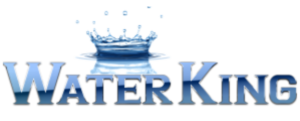Backflow Testing – Every town and municipality on Long Island has set mandatory rules and regulations in regard to testing backflow devices. Although the test is required by the NY State Health Department and enforced by the Water Districts that serve its customers, it can sometimes seem like a bureaucratic mess to the customer who is only trying to do the right thing. We at Water King Inc. have been testing Backflow prevention devices for over 30 years and we are up-to-date with your Water District’s requirements. Along with licensed, certified testing, we will submit all necessary paperwork on your behalf.
Why do I need a Backflow Prevention Device? – The simple answer is to ensure that the water you and your family drink is clean. In a water supply system, water is maintained at a significant pressure level, enabling the flow of water from your tap, shower, hose or other device. When pressure reduces or fails, pipes freeze, or there is an unexpected high demand on the water system, the minimal pressure in the pipe may allow for contamination. Polluted water from the ground, storage or other murky sources may be drawn up into your system (i.e. backflow) and cause potential harm to you or your family.
How can our water supply system be contaminated? – There are many situations where there is a potential for contaminates to be introduced into the potable (public) water system. For instance, when there is a fire in a neighborhood the Fire Department hooks up a pump to a nearby fire hydrant. The suction from this large pump can pull water from nearby commercial and industrial buildings. This would be a cross-connection or backflow situation. Once water enters a commercial or industrial building the law states it is the property owner’s responsibility to protect the water distribution system and the water district’s obligation to make sure through annual testing that the owner is meeting this obligation. If testing is not done in a timely manner, the water district can terminate water service to that property. If you would like more information on your specific requirements, select your water district below:
Suffolk County
SCWA Water District – https://www.scwa.com/backflowprevention
Dix Hills Water District – http://www.huntingtonny.gov/DHWD
Greenlawn Water District – http://www.greenlawnwater.org/
South Huntington Water District – http://www.shwd.org/
South Farmingdale Water District – http://sfwater.com/
Saint James Water District – http://www.smithtownny.gov/
Riverhead Water District – http://www.townofriverheadny.gov/
Greenport Water District – http://villageofgreenport.org/
Nassau County
Albertson Water District – http://www.albertsonwater.org/
Franklin Square Water District – http://www.fswd.org/
Garden City Water District – http://www.gcpwater.org/
Hicksville Water District – http://hicksvillewater.org/
Locust Valley Water District – http://www.locustvalleywater.com/
Manhasset-Lakeville Water District – http://www.mlwd.net/
Massapequa Water District – http://www.massapequawater.com/
New York American Water District – https://amwater.com/nyaw/
Oyster Bay Water District – http://www.oysterbaywaterdistrict.com/
Plainview Water District – http://www.plainviewwater.org/
Port Washington Water District – http://www.pwwd.org/
Roslyn Water District – http://www.roslynwater.org/
of Hempstead Water District – https://www.toh.li/water-department
Village of Garden City – http://www.gardencityny.net
Westbury Water district – http://westburywaterdistrict.com
You may be alerted by your water supplier that you must install a backflow device or that your current backflow device is in need of repair or replacement. Up to this point, you may not even know what the device is, what it does, or why you need one. Allow Water King to take a moment to familiarize you with water backflow prevention devices.
Backflow itself is defined as an undesirable reversal of a flow of liquid, gas or solid into a potable water supply. A backflow prevention device keeps this from happening and protects your potable water from cross-connection contamination.
In a water supply system, water is maintained at a significant pressure level, enabling the flow of water from your tap, shower, hose or other device. When pressure reduces or fails, pipes freeze, or there is an unexpected high demand on the water system, the minimal pressure in the pipe may allow for contamination. Polluted water from the ground, storage or other murky sources may be drawn up into your system (i.e. backflow) and cause potential harm to you or your family.
